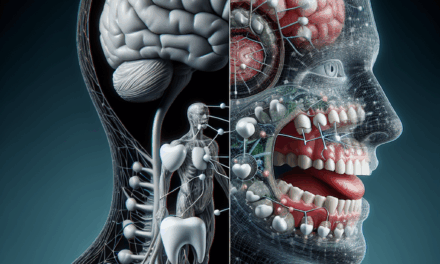Unpacking EHR-Related Clinician Burnout: Causes and Solutions
Electronic Health Records (EHRs) have transformed the healthcare landscape, promising improved patient care, streamlined workflows, and enhanced data accessibility. However, the implementation of EHR systems has also been linked to a significant increase in clinician burnout. This article delves into the multifaceted causes of EHR-related burnout among healthcare professionals and explores potential solutions to mitigate this pressing issue.
Understanding Clinician Burnout
Clinician burnout is a state of emotional, physical, and mental exhaustion caused by prolonged and excessive stress. It is characterized by three main components: emotional exhaustion, depersonalization, and a reduced sense of personal accomplishment. The World Health Organization (WHO) recognizes burnout as an occupational phenomenon, and its prevalence among healthcare providers has reached alarming levels.
According to a study published in the Journal of the American Medical Association (JAMA), nearly 50% of physicians report experiencing burnout. This statistic is particularly concerning given the critical role that healthcare providers play in patient outcomes. Burnout not only affects clinicians’ well-being but also has far-reaching implications for patient safety, quality of care, and healthcare costs.
1. The Role of EHRs in Clinician Burnout
EHRs were designed to improve the efficiency and quality of healthcare delivery. However, their implementation has often led to unintended consequences that contribute to clinician burnout. Understanding these factors is crucial for addressing the issue effectively.
1.1 Increased Administrative Burden
One of the primary contributors to EHR-related burnout is the increased administrative burden placed on clinicians. EHR systems require extensive data entry, which can be time-consuming and tedious. Clinicians often find themselves spending more time on documentation than on direct patient care.
- Time Consumption: A study by the American Medical Association (AMA) found that physicians spend an average of 1-2 hours on EHR-related tasks for every hour of direct patient care.
- Complexity of Systems: Many EHR systems are not user-friendly, leading to frustration and inefficiency. Clinicians may struggle to navigate complex interfaces, which can exacerbate feelings of burnout.
- Increased Work Hours: The additional time spent on EHR tasks often leads to longer work hours, contributing to fatigue and stress.
1.2 Loss of Patient Interaction
Another significant factor contributing to burnout is the loss of meaningful patient interaction. As clinicians become more engrossed in EHR documentation, they may find themselves less engaged with their patients.
- Decreased Eye Contact: Clinicians often face their screens instead of their patients, leading to a lack of eye contact and connection.
- Reduced Empathy: The focus on data entry can diminish the clinician’s ability to empathize with patients, leading to feelings of depersonalization.
- Patient Dissatisfaction: Patients may feel neglected or undervalued when clinicians are preoccupied with their screens, which can further strain the clinician-patient relationship.
1.3 Information Overload
EHRs can generate an overwhelming amount of information, which can be difficult for clinicians to process. This information overload can lead to decision fatigue and increased stress levels.
- Excessive Alerts: EHR systems often include numerous alerts and notifications, which can distract clinicians and lead to alert fatigue.
- Data Overload: Clinicians may struggle to sift through vast amounts of data to find relevant information, leading to frustration and inefficiency.
- Inconsistent Data Quality: Inaccurate or incomplete data can further complicate clinical decision-making, increasing stress levels.
1.4 Lack of Customization
Many EHR systems are not tailored to the specific needs of different specialties or practices. This lack of customization can hinder workflow efficiency and contribute to burnout.
- Generic Templates: EHRs often use generic templates that may not align with the specific needs of a clinician’s practice, leading to inefficiencies.
- Limited Functionality: Clinicians may find that their EHR lacks essential features that would streamline their workflow, leading to frustration.
- Resistance to Change: Clinicians may resist using EHRs that do not meet their needs, further exacerbating feelings of burnout.
1.5 Insufficient Training and Support
Inadequate training and support during EHR implementation can leave clinicians feeling overwhelmed and ill-equipped to use the system effectively.
- Training Gaps: Many healthcare organizations provide minimal training, leaving clinicians to navigate complex systems on their own.
- Lack of Ongoing Support: Once the initial training is complete, ongoing support may be lacking, leading to frustration when issues arise.
- Peer Support: A lack of peer support can further isolate clinicians, making it difficult for them to share challenges and solutions.
2. The Impact of EHR-Related Burnout on Patient Care
The consequences of EHR-related clinician burnout extend beyond the individual clinician, affecting patient care and the overall healthcare system. Understanding these impacts is essential for recognizing the urgency of addressing burnout.
2.1 Decreased Quality of Care
Burnout can lead to a decline in the quality of care provided to patients. Clinicians experiencing burnout may be less attentive, make more errors, and have difficulty maintaining the high standards of care expected in healthcare settings.
- Increased Medical Errors: A study published in the Journal of Patient Safety found that burnout is associated with a higher likelihood of medical errors, which can jeopardize patient safety.
- Reduced Patient Satisfaction: Patients may perceive a decline in the quality of care when clinicians are disengaged or overwhelmed, leading to dissatisfaction.
- Negative Health Outcomes: Burnout can contribute to poorer health outcomes for patients, including increased hospital readmissions and complications.
2.2 Impaired Communication
Effective communication is a cornerstone of quality patient care. Burnout can impair clinicians’ ability to communicate effectively with patients and colleagues.
- Miscommunication: Clinicians experiencing burnout may struggle to convey important information clearly, leading to misunderstandings.
- Reduced Collaboration: Burnout can hinder teamwork and collaboration among healthcare providers, impacting the overall care team dynamic.
- Patient Engagement: Clinicians may find it challenging to engage patients in their care, leading to decreased adherence to treatment plans.
2.3 Increased Turnover Rates
Burnout can lead to higher turnover rates among healthcare professionals, which can strain healthcare systems and impact patient care continuity.
- Staff Shortages: High turnover rates can result in staff shortages, leading to increased workloads for remaining clinicians and further exacerbating burnout.
- Loss of Institutional Knowledge: When experienced clinicians leave, valuable institutional knowledge is lost, impacting the quality of care.
- Increased Recruitment Costs: Healthcare organizations may face increased recruitment and training costs to replace departing staff, straining budgets.
2.4 Impact on Team Dynamics
Burnout can disrupt team dynamics within healthcare settings, leading to a toxic work environment that affects both clinicians and patients.
- Decreased Morale: Burnout can lead to decreased morale among team members, impacting collaboration and teamwork.
- Increased Conflict: Clinicians experiencing burnout may be more irritable and less patient with colleagues, leading to increased conflict.
- Negative Work Culture: A culture of burnout can permeate an organization, making it difficult to attract and retain talent.
2.5 Financial Implications
The financial implications of EHR-related burnout are significant, affecting both healthcare organizations and patients.
- Increased Healthcare Costs: Burnout can lead to increased healthcare costs due to higher rates of medical errors, readmissions, and turnover.
- Insurance Implications: Patients may face higher insurance premiums as healthcare organizations grapple with the financial impact of burnout.
- Loss of Revenue: High turnover rates can lead to lost revenue for healthcare organizations as they struggle to maintain staffing levels.
3. Strategies for Mitigating EHR-Related Burnout
Addressing EHR-related burnout requires a multifaceted approach that involves healthcare organizations, policymakers, and clinicians themselves. Implementing effective strategies can help mitigate burnout and improve clinician well-being.
3.1 Streamlining EHR Workflows
One of the most effective ways to reduce EHR-related burnout is to streamline workflows associated with EHR use. This can involve optimizing EHR systems to better meet the needs of clinicians.
- Customization: Healthcare organizations should invest in customizing EHR systems to align with the specific workflows of different specialties.
- Template Optimization: Developing specialty-specific templates can help reduce the time spent on documentation and improve efficiency.
- Reducing Redundancies: Identifying and eliminating redundant data entry tasks can help streamline workflows and reduce clinician frustration.
3.2 Enhancing Training and Support
Providing comprehensive training and ongoing support is essential for helping clinicians navigate EHR systems effectively.
- Initial Training: Organizations should invest in thorough initial training programs that cover all aspects of EHR use.
- Ongoing Education: Offering ongoing education and refresher courses can help clinicians stay updated on system changes and best practices.
- Peer Support Programs: Establishing peer support programs can create a collaborative environment where clinicians can share tips and solutions.
3.3 Fostering a Positive Work Environment
Creating a positive work environment is crucial for reducing burnout and promoting clinician well-being.
- Encouraging Work-Life Balance: Organizations should promote policies that encourage work-life balance, such as flexible scheduling and time off for self-care.
- Recognizing Achievements: Acknowledging and celebrating clinician achievements can boost morale and foster a sense of accomplishment.
- Providing Mental Health Resources: Offering access to mental health resources and support can help clinicians cope with stress and burnout.
3.4 Implementing Technology Solutions
Leveraging technology can help alleviate some of the burdens associated with EHR use and improve clinician efficiency.
- Voice Recognition Software: Implementing voice recognition software can reduce the time spent on data entry and improve documentation efficiency.
- Artificial Intelligence: Utilizing AI-driven tools can help automate routine tasks, allowing clinicians to focus on patient care.
- Mobile Access: Providing mobile access to EHRs can enable clinicians to document care more efficiently and reduce time spent at their desks.
3.5 Engaging Clinicians in EHR Design
Involving clinicians in the design and implementation of EHR systems can lead to more user-friendly solutions that better meet their needs.
- User Feedback: Organizations should actively seek feedback from clinicians during the design process to identify pain points and areas for improvement.
- Collaborative Design: Engaging clinicians in collaborative design sessions can lead to more intuitive and efficient EHR systems.
- Continuous Improvement: Organizations should commit to ongoing evaluation and improvement of EHR systems based on clinician feedback.
4. Case Studies: Successful Interventions
Examining case studies of healthcare organizations that have successfully implemented interventions to reduce EHR-related burnout can provide valuable insights and inspiration for others.
4.1 The Mayo Clinic Experience
The Mayo Clinic has been at the forefront of addressing clinician burnout related to EHR use. The organization implemented several strategies to improve clinician well-being and reduce burnout.
- Streamlined Workflows: The Mayo Clinic invested in customizing its EHR system to streamline workflows and reduce documentation burdens.
- Dedicated Support Teams: The organization established dedicated support teams to assist clinicians with EHR-related issues, providing timely assistance and reducing frustration.
- Wellness Programs: The Mayo Clinic implemented wellness programs that promote work-life balance and provide mental health resources for clinicians.
As a result of these initiatives, the Mayo Clinic reported a significant reduction in clinician burnout rates and improved job satisfaction among its staff.
4.2 Virginia Mason Medical Center
Virginia Mason Medical Center in Seattle, Washington, has also made strides in addressing EHR-related burnout through innovative approaches.
- Lean Methodology: The organization adopted Lean methodology to identify inefficiencies in EHR workflows and streamline processes.
- Team-Based Care: Virginia Mason implemented team-based care models that allow clinicians to share responsibilities and reduce individual workloads.
- Regular Check-Ins: The organization conducts regular check-ins with clinicians to assess their well-being and gather feedback on EHR use.
These efforts have led to improved clinician engagement and a more positive work environment at Virginia Mason Medical Center.
4.3 Geisinger Health System
Geisinger Health System in Pennsylvania has also taken proactive steps to address EHR-related burnout among its clinicians.
- Customized EHR Solutions: Geisinger invested in developing customized EHR solutions that align with the specific needs of its clinicians.
- Wellness Initiatives: The organization launched wellness initiatives that focus on mental health support and stress management for clinicians.
- Feedback Mechanisms: Geisinger established feedback mechanisms that allow clinicians to voice their concerns and suggest improvements to EHR systems.
As a result, Geisinger has seen a decrease in burnout rates and an increase in clinician satisfaction and retention.
5. The Future of EHRs and Clinician Well-Being
The future of EHRs and clinician well-being is closely intertwined. As healthcare continues to evolve, it is essential to prioritize the well-being of clinicians to ensure high-quality patient care.
5.1 Evolving EHR Technology
The ongoing evolution of EHR technology presents opportunities for improving clinician experiences and reducing burnout.
- User-Centric Design: Future EHR systems should prioritize user-centric design principles to enhance usability and efficiency.
- Integration with Other Technologies: Integrating EHRs with other technologies, such as telehealth platforms and patient engagement tools, can streamline workflows and improve care delivery.
- Data Analytics: Leveraging data analytics can help identify trends in clinician burnout and inform targeted interventions.
5.2 Policy Changes
Policy changes at the organizational and governmental levels are essential for addressing EHR-related burnout effectively.
- Regulatory Support: Policymakers should consider regulations that promote clinician well-being and reduce administrative burdens associated with EHR use.
- Funding for Mental Health Resources: Increased funding for mental health resources and support programs for clinicians is crucial for addressing burnout.
- Collaboration with Stakeholders: Engaging stakeholders, including clinicians, healthcare organizations, and technology developers, is essential for creating effective solutions.
5.3 Emphasizing Well-Being in Medical Education
Integrating well-being into medical education is vital for preparing future clinicians to navigate the challenges of EHR use and burnout.
- Curriculum Development: Medical schools should develop curricula that emphasize resilience, stress management, and self-care strategies.
- Mentorship Programs: Establishing mentorship programs can provide support and guidance for medical students as they transition into clinical practice.
- Promoting Work-Life Balance: Encouraging work-life balance during training can help future clinicians develop healthy habits that reduce burnout risk.
5.4 Fostering a Culture of Well-Being
Creating a culture of well-being within healthcare organizations is essential for addressing EHR-related burnout effectively.
- Leadership Commitment: Organizational leaders should demonstrate a commitment to clinician well-being by prioritizing initiatives that address burnout.
- Open Communication: Fostering open communication channels can encourage clinicians to voice their concerns and seek support.
- Continuous Improvement: Organizations should commit to continuous improvement efforts that prioritize clinician well-being and address EHR-related challenges.
Conclusion
EHR-related clinician burnout is a complex issue that requires a multifaceted approach to address effectively. By understanding the causes of burnout, recognizing its impact on patient care, and implementing targeted strategies, healthcare organizations can create a more supportive environment for clinicians. The case studies of organizations that have successfully mitigated burnout provide valuable insights and inspiration for others in the field.
The future of EHRs and clinician well-being is promising, with opportunities for technological advancements, policy changes, and a renewed focus on clinician support. By prioritizing the well-being of healthcare providers, we can ensure high-quality patient care and a healthier healthcare system overall.





